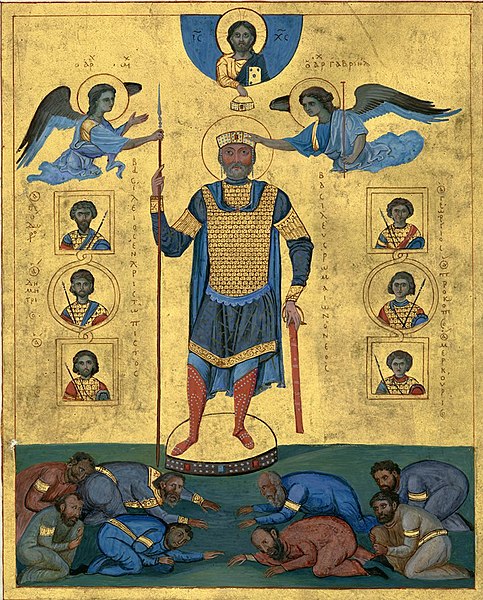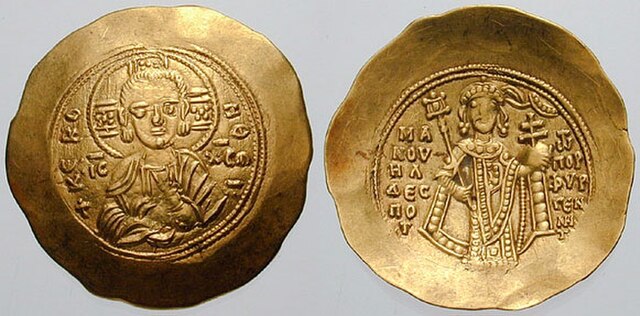Logothete was an administrative title originating in the eastern Roman Empire. In the middle and late Byzantine Empire, it rose to become a senior administrative title, equivalent to a minister or secretary of state. The title spread to other states influenced by Byzantine culture, such as Bulgaria, Sicily, Serbia, and the Danubian Principalities.
A Wallachian Logothete, 1827.
Byzantine bureaucracy and aristocracy
Throughout the fifth century, Hellenistic political systems, philosophies, and theocratic Christian-Eastern concepts had gained power in the eastern Greek-speaking Mediterranean due to the intervention of important religious figures there such as Eusebius of Caesarea and Origen of Alexandria who had been key to developing the constant Christianized worldview of late antiquity.
Painting of Emperor Basil II in triumphal garb, exemplifying the imperial crown and royal power handed down by Christ and the angels.
The back of this coin by Manuel I Comnenus bears his title, porphyrogennetos.
Emperor Manuel II Palaiologos with his family: empress Helena Dragaš (right), and three of their sons, John, Andronikos and Theodore. John, as his father's heir and co-emperor, wears an exact replica of his imperial costume.
Emperor Nikephoros III with an aura flanked by personifications of Truth and Justice, and by his senior court dignitaries, from an illuminated manuscript dating to the 1070s. From left: the proedros and epi tou kanikleiou, the prōtoproedros and prōtovestiarios (a eunuch, since he is beardless), the emperor, the proedros and dekanos, and the proedros and megas primikērios.





